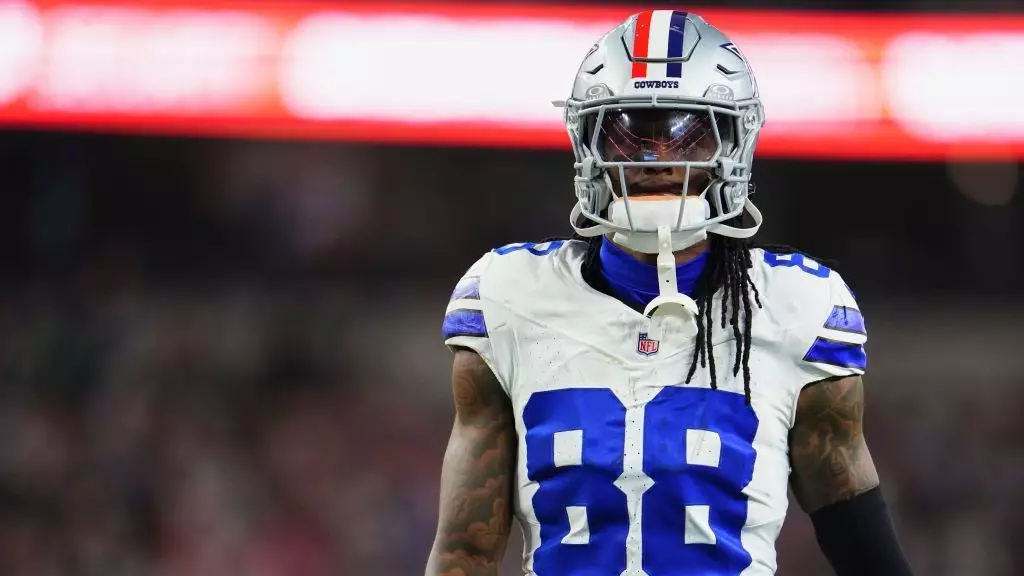In the world of professional football, every point counts, and the atmosphere of stadiums can often be overshadowed by unexpected external factors. Such was the case during a recent game when the Dallas Cowboys faced off against their rivals, the Philadelphia Eagles, and suffered a staggering 34-6 defeat. The painful reality for Cowboys fans was compounded by the missed opportunities—particularly a potentially game-changing touchdown from quarterback Cooper Rush to wide receiver CeeDee Lamb, who found himself ostensibly blinded by the sun. This pivotal moment encapsulated the frustration faced by the team, raising questions regarding stadium design and the implications of natural elements on gameplay.
Can Design Really Be Blamed?
After the game, Jerry Jones, the Cowboys’ owner and general manager, found himself navigating a barrage of questions concerning the sunlight that had interfered with a crucial play. Jones responded with a mix of defensiveness and incredulity, suggesting that the issues with sunlight were not unique to the Cowboys but rather common across the league. His remarks pointed to a broader problem—a reluctance to acknowledge that adjustments must be made to accommodate such uncontrollable elements. The Cowboys, while boasting one of the most advanced and costly stadiums in the NFL, might be overlooking practical solutions that could help athletes perform better and enhance the viewing experience for fans.
Rather than expressing a desire for curtains or other solutions to combat the sun, Jones’s comments hinted at an unwillingness to accept blame and take proactive measures. The use of curtains for other events in the stadium indicates an existing framework for addressing visibility issues, so why not for football? This may reflect a mindset that prioritizes tradition and aesthetic over practical enhancement.
Cooper Rush’s response to the question regarding whether he originally aimed to throw the ball to Lamb revealed another layer of confusion surrounding communication on the field. His assertion that he intended to connect with Lamb but got hit just before delivering the pass showcased an essential aspect of quarterback play—timing and awareness. Visibility in the stadium should be a tactical consideration, particularly when plays hinge on pinpoint accuracy.
Further complicating the situation is the Cowboys’ decision not to practice at AT&T Stadium, which makes it more challenging for players to acclimatize themselves to the unique conditions of the venue. The sunlight issues are primarily notable during late afternoon games in autumn, yet the lack of familiarity with these circumstances could have affected player performance. Coaches should analyze and adapt their strategies with consideration for environmental conditions, rather than relying solely on traditional play-calling.
Amidst discussions about sunlight problems, CeeDee Lamb’s candid remarks about the potential use of curtains reflected a desire for improvement not just for him personally, but for the entire team. His willingness to speak up about the issue reveals a disconnect between the management and the players’ experiences. Players need to have their concerns heard and addressed; after all, it is their performance that hinges on such decisions.
As Lamb jokingly noted, the media seemed to be doing his job by discussing the topic with Jones. Shouldn’t the players themselves have a voice in decision-making processes that directly affect their game? A healthy communication strategy could bridge the gap between management’s decisions and players’ feedback, ultimately leading to better outcomes.
The Cowboys’ loss highlighted an intersection of football and environmental challenges that cannot be ignored. While weather conditions will remain a perennial part of outdoor sports, organizations must adapt to ensure optimal performance. Jerry Jones and the Cowboys’ management face a pivotal choice: cling to the status quo or explore practical solutions such as curtains that could enhance their competitive edge and address player concerns.
As the Cowboys look towards the future, it is essential for them to not only focus on strategies on the field but to also consider off-field elements that can impact that performance. Ignoring the sunlight issue may serve as a temporary fix, but sustainable, proactive solutions will ultimately determine the team’s success as they strive for greatness in the ever-challenging arena of professional football.


Leave a Reply